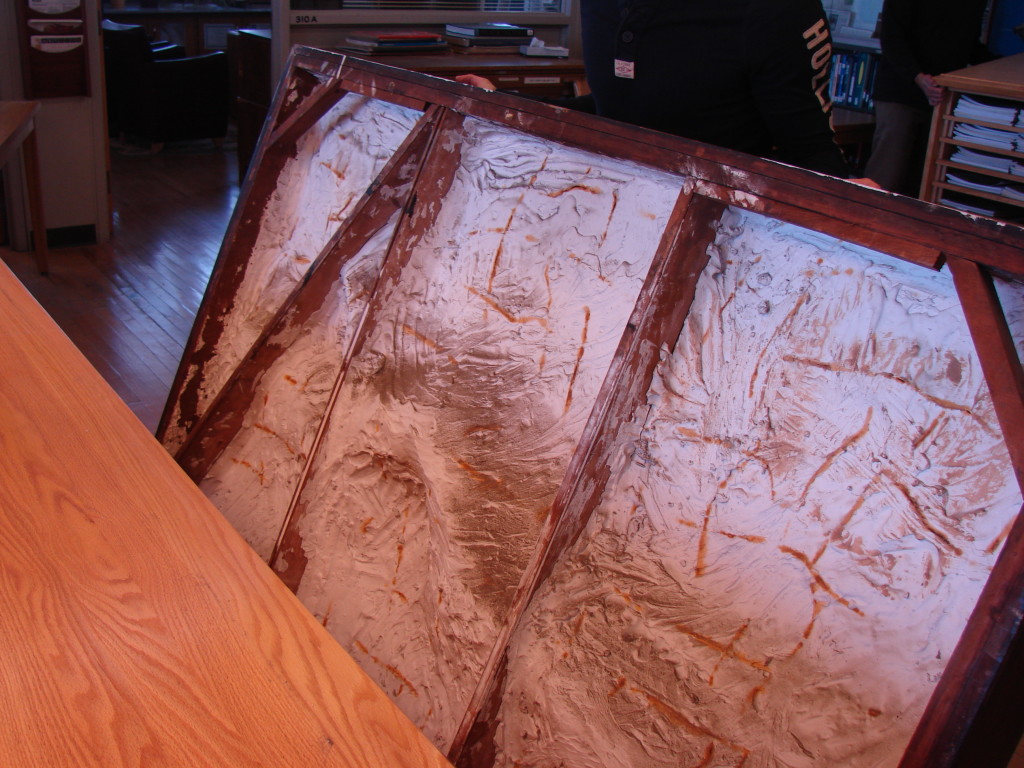New word: Petrosomatoglyph. It’s the body prints or markings in a rock-like substance. Think of a handprint in your neighborhood cement sidewalk. Petrosomatoglyph. Hollywood Boulevard Walk of Fame. Dinosaur footprints in fossilized mud. The ancient Indian markings in the southwestern desert. (I’ve heard that cement layers, who were Mets fans, when refurbishing the old Yankee Stadium wrote Met player initials in hidden parts of the cement they were pouring to jinx the games.)
The backs of these historical relief models are also fascinating. I’ve had the luck to see a few while they were uninstalled for restoration or photography. Not only can you see exactly how the models were cast, framed, and reinforced, but you also get to see petrosomatoglyphs.
 For example, the back of the Yosemite Valley map showed clear finger and palm markings where excess plaster material was removed. In some places the plaster seemed to pushed in and around the wire frame between the terrain top and the wooden frame. If you look very closely, you can see fingerprints.
For example, the back of the Yosemite Valley map showed clear finger and palm markings where excess plaster material was removed. In some places the plaster seemed to pushed in and around the wire frame between the terrain top and the wooden frame. If you look very closely, you can see fingerprints.
It appears the makers also used some kind of squeegee or trowel to move the plaster material around before it hardened. Edwin Howell’s notes discussed that temperature and too fast pouring could leave air bubbles that had to be whisked to the top or punctured to avoid leaving a weak spot where a crack could propagate.
On the back of the Uinta map, whose plaster has a distinct addition of fine gravel or sand to give the map surface a texture, you can see finger markings that seemed to scoop out floating sand bars from the plaster skim top.
On the Henry Mountains Stereogram is the petrosomatoglyph “1883” in the back. The back of the Eurasia map had a shirt button embedded in the plaster.
